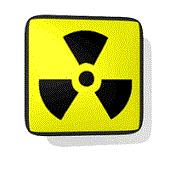
Free CEUs for Certified Radiology Technicians
The CME & Contact Hours You Need Today for Radiologic Tech License Renewal
|
WELCOME! We are proud to sponsor this educational initiative, dedicated to providing free Radiology Tech CME & CEUs required by many state boards for Rad Tech license renewal. Check back often for updates, including new free Radiology Technician CME courses offering free CEUs that are posted frequently. Through extensive content review, our staff approves timely Rad Tech CEU courses that are AHRA or ASRT approved for ARRT CE
ALL CEU, CME & contact hour offerings are FREE! |
|
Select a course by clicking the title. Courses or fees may have changed on provider’s websites since their posting here. Always check the provider’s website for accreditation information, terms and conditions of courses offered. Courses listed here are not the property of FreeCME4Me, nor do we offer any courses & are not responsible for the those posted on this site
|
To check Radiologic Tech CEU requirements by STATE CLICK HERE!
|
|
Improving Medication Safety in the Radiology Setting- Describe how medications and contrast agents are ordered, stored, prepared, and utilized in the radiology settingExplain the difference between the new FDA classification of an imaging bulk package vs. a pharmacy bulk package of contrast, and why the FDA developed this new product type. Identify system-based causes of medication errors associated with the use of medications and contrast agents in radiology. Prioritize selected strategies to prevent harm and improve medication safety in radiology. Describe current regulatory and accreditation requirements related to the use of medications and contrast agents in radiology, and the role of the pharmacy in assuring compliance to the standards. 2.0 Free ASRT CEUs (+RPh)
When Life-saving Breath Turns Into Catastrophe: A Comprehensive Approach to the Prevention of Ventilator-Associated Events - List the three major cause categories of Ventilator Associated Adverse Events (VAE) complications. Identify primary sources of chemical and microbial aspiration. Describe how mechanical injury occurs. Summarize preventative practices shown to reduce the three primary causes of VAE. 2.0 Free ASRT CEUs (+MD, RT) |
& be notified when new FREE CME has posted!
|
|
Featured Free CME of the Month NEW! Practical Considerations of Ultrasound Probe Disinfection- Determine the proper procedures for ultrasound probe disinfection. Establish procedures that will ensure patient safety and meet accreditation requirements. 1.0 Free ASRT CEUs
MR Registry Prep Series: MR Data Acquisition- Define the terms: Phase and Frequency. Recognize the gradient functions in a pulse sequence diagram and describe the order in which they are performed. Describe what is meant by “number of averages” or “NSA”. Describe the differences between a 2DFT acquisition and a 3DFT acquisition. Describe the various techniques utilized to reduce acquisition time. 1.0 Free ARRT CEUs
Shoulder Ultrasound: A step-by-step approach- Understand the usability and versatility of MSK ultrasound, anatomy of the shoulder, the basics of a proper musculoskeletal exam, and the common indications of rotator cuff tears 1.0 Free ASRT CEUs Current Concepts in Molecular Imaging of Parkinson's Disease and Movement Disorders- Describe the movement disorder spectrum and implications for diagnosis and treatment. Discuss the benefits of molecular imaging for Parkinson’s disease and other movement disorders. Explain the mechanism of dopamine transport and best practices for acquiring dopamine transporter images. 1.0 Free ARRT CEUs (+MD) Ultrasound & MR Elastography in Children- Review the safety of fetal MR Imaging. Describe the technical approach to fetal MR Imaging. Describe cases in which fetal MRI was helpful in the evaluation of singleton and twin gestations. 1.0 Free ARRT CEUs Emerging Concepts in Atypical Femoral Fracture- Causes, Characteristics, and Imaging– Discuss the potential relationship between long-term bisphosphonate (BP) therapy and atypical femoral fracture (AFF). Recognize the radiographic features that distinguish AFFs from ordinary osteoporotic femoral fracture. Use appropriate imaging techniques, including the use of plain film, dual-energy x-ray absorptiometry (DXA) and CT, for identifying early radiographic signs of AFF. 1.0 Free ASRT CEUs |
Alliance of Cardiovascular Professionals
PASES: Online Interactive DVT / IVC Filter CEU Education– This program is a 9-module comprehensive didactic curriculum providing the knowledge to place vena cava filters. Topics include: Venous Anatomy, Venous Thrombosis, Complication of DVT, Assessment and Diagnosis, Treatment, Patient Selection for Filters, Permenant Vena Cava Filter Preparation & Placement, Placement & Retrieval of Retrievable Vena Cava Filters.Radiological Techs must take this exam to receive ASRT credits. 1.0 Free ASRT CEUs
Optimal Stent– This online module provides learning regarding optimal stent deployment. Radiological Techs must take this exam to receive ASRT credits. 0.75 Free ASRT CEUs
Carotid Artery Stent Education System (CASESSM) program was developed under the guidance of leading endovascular experts and in accordance with the FDA mandates on Carotid artery stent training. This interactive, online didactic program is composed of 22 modules. Radiological Techs must take this exam and pass to receive ASRT credits. 3.0 Free ASRT CEUs
PASES: Online Interactive DVT / IVC Filter CEU Education– This program is a 9-module comprehensive didactic curriculum providing the knowledge to place vena cava filters. Topics include: Venous Anatomy, Venous Thrombosis, Complication of DVT, Assessment and Diagnosis, Treatment, Patient Selection for Filters, Permenant Vena Cava Filter Preparation & Placement, Placement & Retrieval of Retrievable Vena Cava Filters.Radiological Techs must take this exam to receive ASRT credits. 1.0 Free ASRT CEUs
Optimal Stent– This online module provides learning regarding optimal stent deployment. Radiological Techs must take this exam to receive ASRT credits. 0.75 Free ASRT CEUs
Carotid Artery Stent Education System (CASESSM) program was developed under the guidance of leading endovascular experts and in accordance with the FDA mandates on Carotid artery stent training. This interactive, online didactic program is composed of 22 modules. Radiological Techs must take this exam and pass to receive ASRT credits. 3.0 Free ASRT CEUs
|
Visceral Fat: The Invisible Health Risk- Discuss the health risks associated with excess body fat, especially visceral fat. Explain how excess visceral fat produces inflammatory substances that can interfere both with hormone function and the development of metabolic syndrome. Evaluate the advantages and disadvantages of anthropomorphic and imaging for quantifying fat volume. Implement DEXA protocols to accurately quantify visceral fat volume. Enlighten and educate patients on body fat assessment and means for managing and improving their health. 1.0 Free ARRT CEUs (+MD) |
|
Preventing Medical Errors in Radiology- Provide examples of staff involvement in the commission of medical errors that occur in a Radiology Department. Discuss three to seven factors that contribute to the commission of medical errors in a healthcare facility. Identify steps that should be taken to create and maintain a safe environment in which to provide care to patients. Describe steps that can be taken to provide control over the introduction of process changes, in-services and announcements. Define the effect of opting-out and the steps that can be taken to eliminate this practice. Discuss the importance and requirements surrounding the practice of providing information each time the care of a patient is transferred from one provider to another. List practices that support the safe administration of medications, including the five rights of medication administration. 3.5 Free AHRA CEUs
Emerging Therapy for the Treatment of Peripheral Vascular Disease: Clinical Applications for Drug-Coated Balloons– Describe the risk factors, clinical presentation, and evaluation of peripheral vascular disease. Discuss clinical trial data on the potential clinical applications for drug-coated balloons in treating peripheral vascular disease. Summarize the histopathology and mechanism of action for drug-coated balloons in treating peripheral vascular disease. Review challenging cases on the use of emerging technologies to treat peripheral vascular disease. 0.5 Free ARRT CEUs (+MD, DPM)
Ultrasound Shear Wave Elastography for Liver Fibrosis Assessment- Diagnosis and staging of liver disease, as well as varying methods and techniques to diagnose. How to combine a routine ultrasound imaging exam of the liver anatomy with targeted tissue stiffness values. How liver elastography can help you evaluate and follow up on patients under treatment to monitor progression, stabilization or regression of liver disease . The potential for change utilizing elastography in clinical practice and reduction in medical costs 1.0 Free ASRT CEUs
Emerging Therapy for the Treatment of Peripheral Vascular Disease: Clinical Applications for Drug-Coated Balloons– Describe the risk factors, clinical presentation, and evaluation of peripheral vascular disease. Discuss clinical trial data on the potential clinical applications for drug-coated balloons in treating peripheral vascular disease. Summarize the histopathology and mechanism of action for drug-coated balloons in treating peripheral vascular disease. Review challenging cases on the use of emerging technologies to treat peripheral vascular disease. 0.5 Free ARRT CEUs (+MD, DPM)
Ultrasound Shear Wave Elastography for Liver Fibrosis Assessment- Diagnosis and staging of liver disease, as well as varying methods and techniques to diagnose. How to combine a routine ultrasound imaging exam of the liver anatomy with targeted tissue stiffness values. How liver elastography can help you evaluate and follow up on patients under treatment to monitor progression, stabilization or regression of liver disease . The potential for change utilizing elastography in clinical practice and reduction in medical costs 1.0 Free ASRT CEUs
Medication Safety in Radiology: Often Unrecognized Issues- Discuss the different types of contrast injection systems used in imaging services and invasive cardiology, and how contrast is administered using these devices. Identify system-based causes of errors associated with the use of medications in radiology. Prioritize selected strategies to prevent harm and improve medication safety in radiology. Outline current regulatory and accreditation requirements related to the use of medications in radiology, and safe ways to comply with them. Describe pharmacy’s role in the radiology setting related to safe medication use. 2.0 Free ASRT CEUs
Contrast-Enhanced Digital Mammography– Evaluate the role of contrast-enhanced digital mammography (CEDM) as an adjunct to full-field digital mammography for supplemental diagnostic breast imaging. Identify the patient cohorts who may benefit from contrast-enhanced digital mammography. Describe the educational and operation issues, as well as benefits and risks, of integrating CEDM into clinical practice. 1.0 Free ASRT CEUs
DXA and Body Composition: Emerging Clinical Applications– Assess the role of dual-energy x-ray absorptiometry (DXA) in the evaluation of body composition. Describe the pitfalls and challenges in using DXA for identifying at-risk patients. Compare DXA to other methods of body composition analysis used in the clinical setting. Identify the patient populations that would best benefit from body composition analysis. 1.0 Free ARRT CEUs
Contrast-Enhanced Digital Mammography– Evaluate the role of contrast-enhanced digital mammography (CEDM) as an adjunct to full-field digital mammography for supplemental diagnostic breast imaging. Identify the patient cohorts who may benefit from contrast-enhanced digital mammography. Describe the educational and operation issues, as well as benefits and risks, of integrating CEDM into clinical practice. 1.0 Free ASRT CEUs
DXA and Body Composition: Emerging Clinical Applications– Assess the role of dual-energy x-ray absorptiometry (DXA) in the evaluation of body composition. Describe the pitfalls and challenges in using DXA for identifying at-risk patients. Compare DXA to other methods of body composition analysis used in the clinical setting. Identify the patient populations that would best benefit from body composition analysis. 1.0 Free ARRT CEUs
|
|


